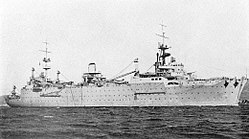Seaplane carriers
Foudre

| Ship | Aircraft | Displacement | Propulsion | Service | ||
|---|---|---|---|---|---|---|
| Laid down | Commissioned | Fate | ||||
| Foudre (converted torpedo boat tender) | 4 | 6,100 t (6,000 long tons) | 24 boilers, triple expansion engines, 2 shafts | 9 June 1892 | 1896 (1912 as carrier) | Decommissioned on 1 December 1921 and scrapped |
Commandant Teste

| Ship | Aircraft | Displacement | Propulsion | Service | ||
|---|---|---|---|---|---|---|
| Laid down | Commissioned | Fate | ||||
| Commandant Teste | 26 | 12,134 t (11,942 long tons) | 4 water-tube boilers, 2 geared steam turbines, 2 shafts | 6 September 1927 | 18 April 1932 | Scuttled at Toulon on 27 November 1942 Sold for scrap on 15 May 1950 |








